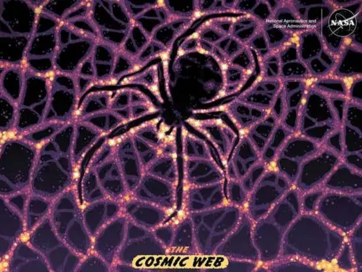Starting with the Big Bang, our Universe has has been expanding steadily. Under the influence of gravity, the first stars and galaxies formed, which assembled to even larger structures over the course of time. In combination with the expansion of the Universe, this created a web-like structure of matter. What are the largest structures in this cosmic web?
Computer simulations help to better understand the development of the dark and empty parts of the Universe. State-of-the-art measurements require precise models and new findings on the empty regions can help in improving these models. What properties make these regions so special for modern research? And what can we learn about our Universe from these voids?
Dr. Nico Schuster from the Ludwig-Maximilians-Universität München (LMU) takes you on a journey into the empty regions of the Universe. In this „Kosmisches Kino“, he gives an overview of the largest structures in our Universe and their special importance for modern research.
This event will be in German.
When: 12.09.2024
Where: Planetarium at ESO Supernova in Garching
Ticket fee: € 6.50
Ticket reservation: ESO Supernova


